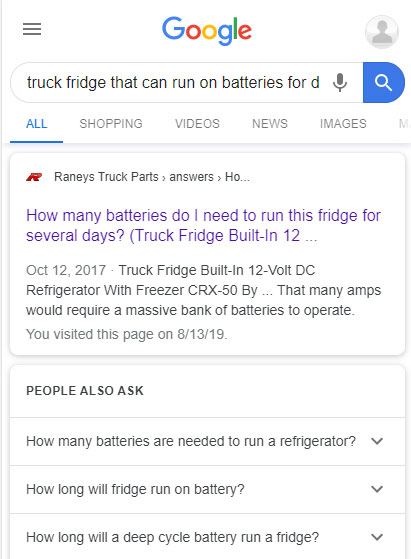In an ecommerce study conducted by NNgroup, they found that 20% of conversion failures were attributed to great product information not being available to the purchaser.
They explained it like this:
In our e-commerce studies, we found that 20% of the overall task failures in the study — times when users failed to successfully complete a purchase when asked to do so — could be attributed to incomplete or unclear product information. Leaving shoppers' questions unanswered can derail a sale or even worse, make shoppers abandon not just the purchase, but the site as well. One shopper in a recent study could not find the information he needed in the product description, so he left the site to search Google for more product information. In the course of his search, he found another site with the same product, a more complete description, and a lower price.
If you feed the customers demand for product information appropriately, you can both reduce your own bounce rate and convert more of those customers. As a side effect, all of those customers who are searching Google with their product information questions…where do they eventually end up? If you format your product content appropriate, they’ll be landing on your ecommerce site…let’s explore how this works.


Reduce ecommerce bounce rates with clear and accessible product information
Did you ever consider why Amazon has a “Have a question?” call to action above the product description and product information sections?
Answer: It’s to most efficiently solve the problem noted above in a customer’s search for product information.
Those capabilities are provided so customers get the answers to their specific product questions as quick as possible which increases conversion rates on the site and ensures the potential customer doesn’t bounce to find that information somewhere else. Typically, that “somewhere else” is simply a Google search asking that specific product question…and wherever they find the answer, they order from that store who provided it.
Answerbase sees that up to 75% of the product questions asked through a product page convert to a sale. That’s a huge amount of customers not bouncing to find that information on your page, but getting the information and turning into a paying customer.
Of course, Q&A engagement is not the only way to provide product information…and not hte preference of every customer. Your goal should be to feed the customers demand for product information that’s going to close the deal and get them to purchase, you need to be doing this well. You need to ensure you’re providing product information in a way that satisfies each customer’s preference for learning…whether that be through visuals visuals, tables or product specifications, or through a question answer format.
Ensure that you have the following covered as best you can:
- product images
- product description
- videos about the product
- product specifications
- product questions & answers
- product reviews
If you’re missing any of these elements for each of your products you may be missing out on valuable conversions. If the task of making sure all those are covered seems overwhelming, just start small. Let your customers engage your page and ask their specific product information need…and let that engagement and demand drive what other product information you add and in what order.
How what about getting those customers coming from Google who are asking product questions? Let’s dive in.

We fired up Answerbase Q&A on our product pages and it's been amazing for increasing sales.
Acquiring new customers and increasing customer value through product Q&A
Customers who are looking for product information turn to Google to answer their pre-sales questions, and the sites who are providing those answers about products are the ones that will survive and thrive. You can not only decrease your bounce rates by providing great product information to your current visitors, but you can also use that same product information in order to grow your organic search traffic.
All questions about your product should be easy to ask within your product page and it should create a new landing page for every popular Q&A thread optimized for search engines. The result is that people who ask similar questions about products on search engines find your content and lead to your store to purchase.
See this example to the right, where an Answerbase customer has the two organic placement as customers search for product information on Google. This simple way of getting in front of your potential customers, simply by answering your current customer’s questions, leads to year over year organic traffic growth to your site.
Best of all, that traffic is more valuable that normal Google search traffic. Answerbase sees that new customers coming from organic traffic to Q&A content have an average lifetime value (LTV) up to 2x higher than those coming from Google as a whole. This attracts more valuable customers to your store, that purchase from you longer, simply by ensuring that your customer’s product information needs are met.

Let's land the plane on improving your ecommerce bounce rates
We hope that this post has been informative and helpful to decrease the product page bounce rates on your own ecommerce store. Of course, as a provider of ecommerce Q&A software we’d love to be the ones to power this activity on your site….so we’d encourage you to View Details about Answerbase Ecommerce Product Q&A Here…..or feel free to contact us for a demo or start a free trial to see how your customers engage in creating valuable Q&A content for your site. They ask, you answer, Answerbase does the rest:)
Hope everything else is well with you and your business and let us know if there is anything else we can do for you.

Answerbase has doubled the overall traffic to our ecommerce site, and increased our organic search traffic by four times!
